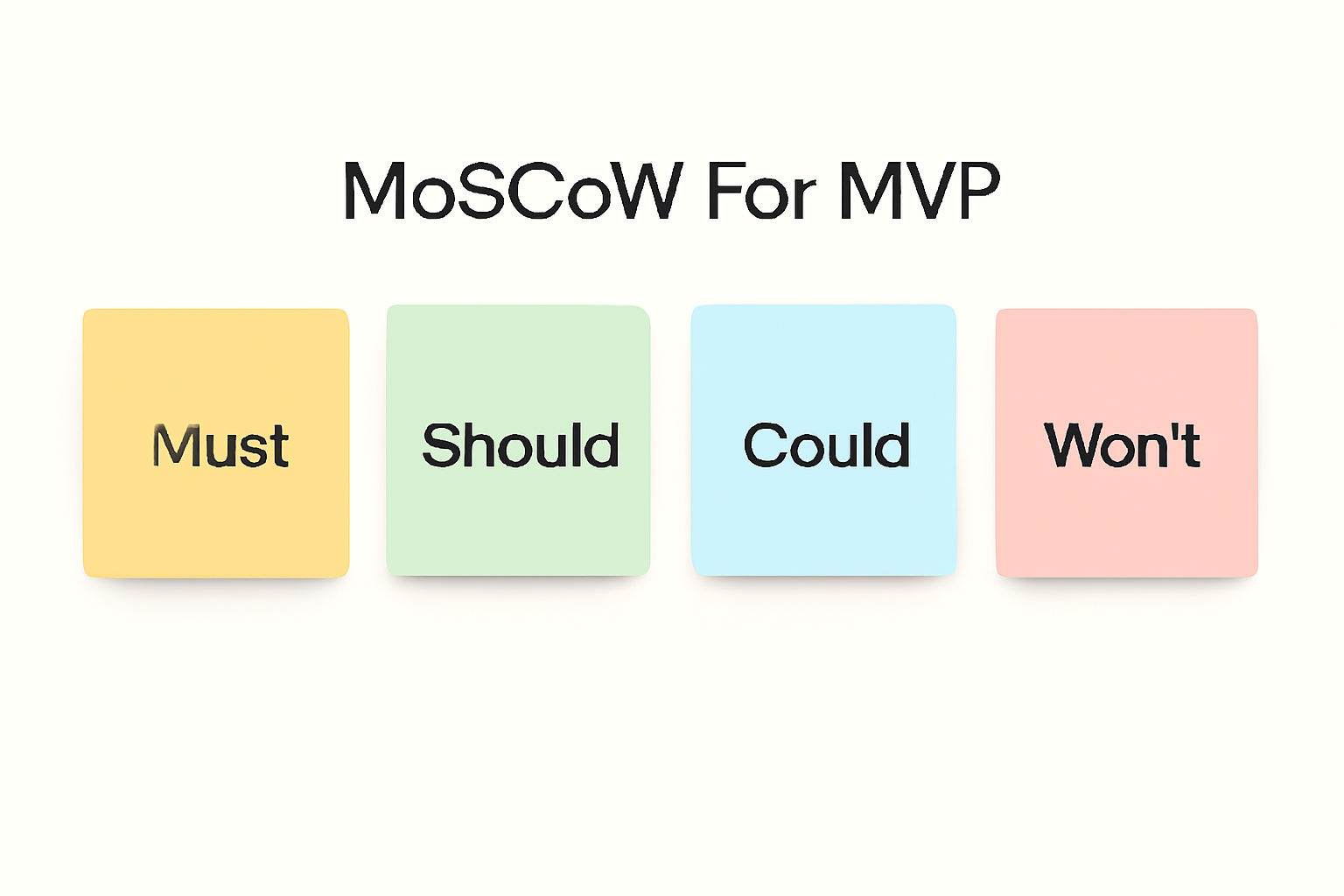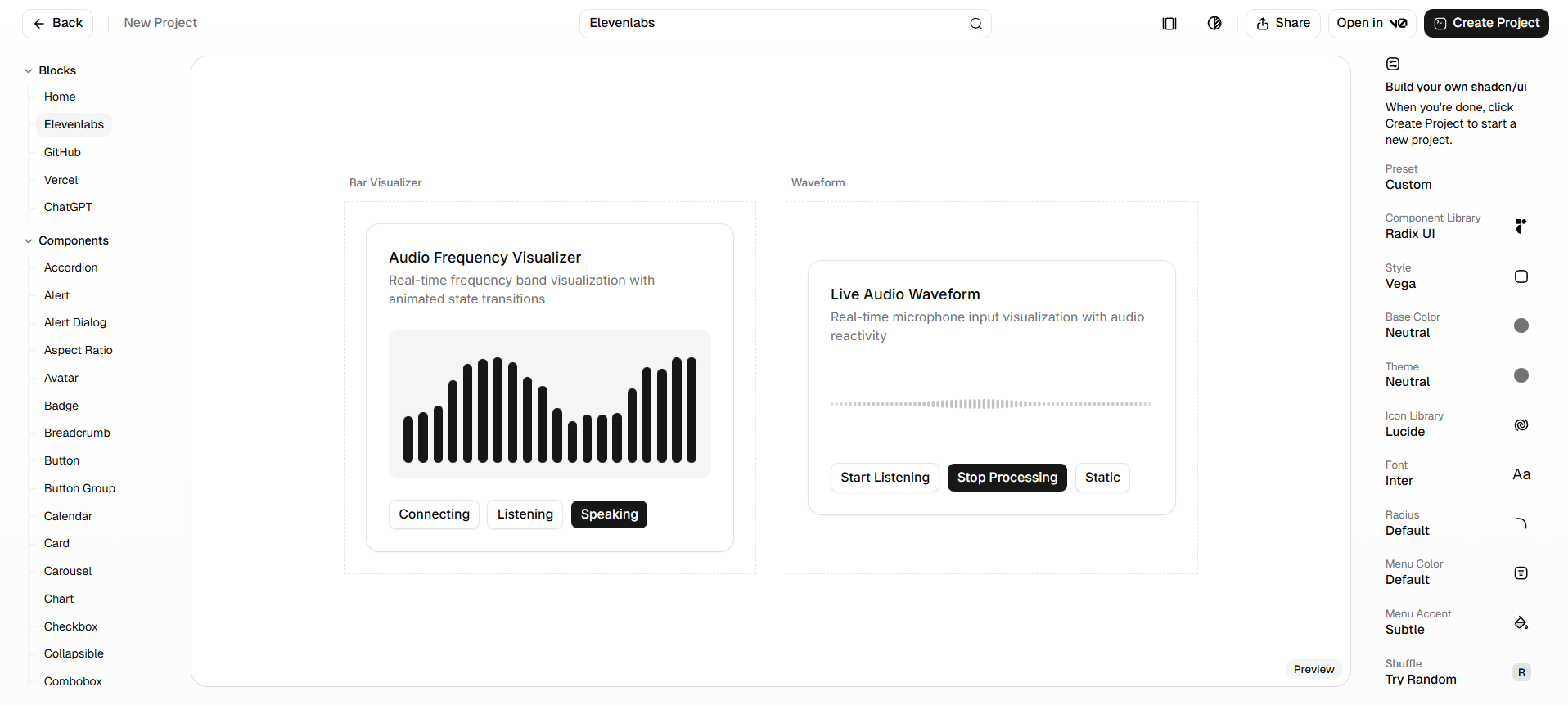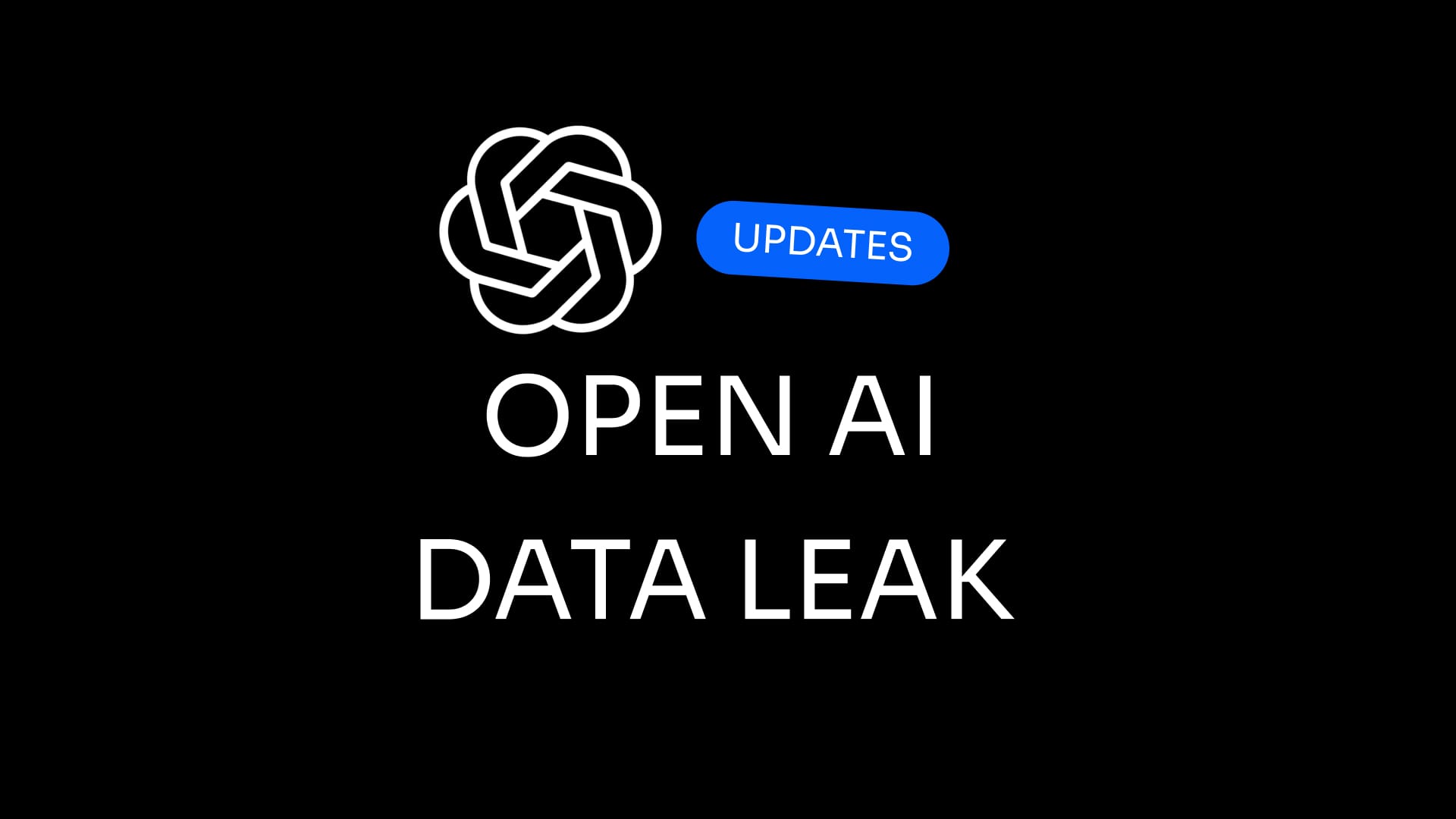Quick Summary
- Use the MoSCoW method to categorize MVP features into Must, Should, Could, and Won’t so scope stays lean.
- Start with user problems and success criteria, then sort features collaboratively.
- Limit Musts to the core user journey and push everything else to later iterations.
- Re-check against time and budget, and communicate tradeoffs visually.
- Combine MoSCoW with lightweight scoring (e.g., RICE) to break ties and stay data-informed.
Method to Build a Focused MVP
Shipping a Minimum Viable Product (MVP) is more about saying no than building everything at once. For indie creators, designers, vibe coders, and new product managers, the hardest part is deciding which features make version one and which don’t. The MoSCoW method gives a clear and simple language to cut scope without killing your product’s value. In minutes, a messy wishlist becomes a focused MVP roadmap you can actually ship.
What is the MoSCoW Method?
The MoSCoW method is a lightweight prioritization framework that helps teams categorize features into four groups:
Must Have: Non-negotiable features required for the MVP to deliver its core value.
Should Have: Important enhancements that improve usability or efficiency but are not critical for the first release.
Could Have: Nice-to-have ideas that can wait until later iterations without harming outcomes.
Won’t Have (for now): Features that are good ideas but explicitly out of scope for this MVP cycle.
Using MoSCoW for MVP decisions aligns the team, controls scope, and keeps the build lean.
Why MoSCoW Works Better than Vague Prioritization
Clarity under pressure: When time or budget gets tight, you already know what to cut.
Shared vocabulary: Engineers, designers, and stakeholders debate less and decide faster.
Outcome focus: Musts tie directly to the primary user journey and success criteria.
Momentum: You ship earlier, learn faster, and earn the right to build the rest.
A Step by Step MoSCoW Workflow for MVPs
Define the problem and success criteria
Start with a simple one-line statement: Who is this for, and what problem are we solving now?
Define success metrics such as first-session task completion, signups, or preorders.
List constraints including timeline, runway, and technical limits.
Brain dump all potential features
Capture everything from core flows to admin tools, edge cases, and UX polish.
Write features as user stories: As a [user], I want [capability] so I can [outcome].
Sort features into MoSCoW buckets
Must Have: Without it, the core use case fails.
Should Have: Improves the experience but can be delayed.
Could Have: Adds delight or differentiation later.
Won’t Have: Explicitly out of scope this cycle.
Pressure test the Must Haves
Ask: Can a new user achieve the core outcome end-to-end?
If one Must is missing, does the MVP fail?
Trim Musts until only the smallest viable path remains.
Sanity check against constraints
Make sure Musts and a few Shoulds fit the available timeline and capacity.
If not, push more features down a category. Choose shipping over perfection.
Break ties with lightweight scoring
Use a simple RICE-style score: Reach, Impact, Confidence, Effort.
Prioritize high-impact and low-effort features first.
Communicate the plan
Publish a single-page MoSCoW board with features, owners, and target dates.
Add rationale to explain why a feature is a Must now.
Set a regular review cadence to adjust based on user feedback.
Practical Examples
Freelancer invoicing SaaS
Must: Sign up, create invoice, send invoice, accept payment, track payment status
Should: Invoice templates, saved clients, basic reporting
Could: Custom branding, multi-currency support, automations, dark mode
Won’t: Native mobile apps, CRM integrations, advanced analytics
Mobile habit tracker
Must: Create habit, daily check-in, streak logic, local notifications
Should: Basic charts, weekly summary, backup and sync
Could: Social sharing, themes, widgets, gamification
Won’t: Community challenges, premium marketplace
Common Pitfalls to Avoid
Everything becomes a Must: Tie Musts only to the core user journey. If version one works without it, it is not a Must.
Hidden Musts in infrastructure: Don’t forget admin tools, error handling, and basic analytics if they are required for the MVP to function.
Aspirational timelines: Re-size Musts to fit reality and ship a thinner slice if needed.
No explicit Won’ts: If you don’t mark features as out of scope, scope creep will sneak in.
One time sorting: Revisit MoSCoW after user interviews and early usage data.
How MoSCoW Fits with Agile
Backlog grooming: Use MoSCoW to keep your backlog clean and realistic.
Sprint planning: Focus on Musts, add a few Shoulds if capacity allows.
Post-launch: Promote validated Shoulds and Coulds based on user feedback.
Pivots: Quickly reclassify features when priorities or constraints change.
Advanced Tip: Combine MoSCoW with RICE
Step one: Categorize features with MoSCoW for clarity.
Step two: Score features within each bucket using RICE.
Result: Clear scope plus data-driven sequencing.
FAQs
What qualifies as a Must Have for an MVP?
A feature is a Must if the core user outcome fails without it. Think of it as the minimal end-to-end path to value.
How many Must Haves should an MVP include?
As few as possible. Often three to seven capabilities that complete the core flow.
Can a Should Have become a Must later?
Yes. User data or compliance needs may promote features upward in later iterations.
How to handle stakeholder requests that feel like scope creep?
Place them in Could or Won’t with a clear rationale and review date. Tie requests back to success metrics.
Is MoSCoW enough on its own?
For small teams, yes. For more precision, layer in a scoring model like RICE.
Key Takeaways
Keep Musts sacred they form the smallest viable path to the promised outcome.
Write features as user stories to anchor value, not technology.
Publish and update a visual MoSCoW board regularly.
Validate with real users and reprioritize as needed.
Combine MoSCoW with simple scoring to ship faster and learn sooner.
















